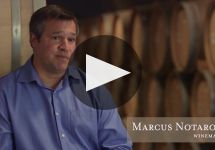Stag's Leap Wine Cellars Cask 23 Cabernet Sauvignon 2018
-
Wine
Enthusiast -
Robert
Parker -
Wine
Spectator



Product Details
Your Rating
Somm Note
Winemaker Notes
Enjoy this CASK 23 with chicken marsala, grilled flank steak with plum salsa, or spiced duck breast with wilted arugula risotto.
Blend: 100% Cabernet Sauvignon
Professional Ratings
-
Wine Enthusiast
An exceptional blend of the famous Fay Estate and S.L.V. Estate, this wine dates back to the 1970s and is spectacular in this vintage. Juicy, bright and effusive, it offers a lightness of spice, well-inte- grated oak and a cohesive, silky texture. Structured, it shows dark-berry fruit, a hint of crushed rock and fig, expansive and joyful on the palate. This should age beautifully; enjoy best from 2028 Cellar Selection.
-
Robert Parker's Wine Advocate
Like the 2020, the terrific 2018 Cask 23 Cabernet Sauvignon leans a bit more heavily on the Fay Vineyard (the 2019 includes a bit more S.L.V.). It's medium to full-bodied, supple, silky and elegant yet still possesses enough richness to evolve for the next two decades. From the stunning, slightly lifted aromas of violets, cherries and cassis, to the long, dusty finish, this exudes class all the way. Best After 2024
-
Wine Spectator
Delivers a lot to like, with a violet thread amid a mix of cassis, plum reduction and blackberry puree flavors, all stitched with light alder, singed vanilla and tobacco notes. Features very light iron and cassis bush notes that curl around the finish, adding subtle tension to the seductive, friendly fruit. Very suave. Best from 2024 through 2040.
Other Vintages
2019-
Jeb
Dunnuck -
Robert
Parker -
Wine
Spectator -
Wine
Enthusiast -
James
Suckling
-
Robert
Parker -
Wine &
Spirits -
James
Suckling - Decanter
-
Wine
Spectator
-
Robert
Parker -
Wine
Enthusiast -
Wine
Spectator -
James
Suckling - Decanter
-
Wine &
Spirits
-
Robert
Parker -
Wine
Spectator
-
Jeb
Dunnuck -
Robert
Parker -
Wine &
Spirits - Decanter
-
James
Suckling -
Wine
Enthusiast -
Wine
Spectator
-
Robert
Parker -
Wine &
Spirits -
Wine
Spectator -
Wine
Enthusiast
-
Robert
Parker - Decanter
-
Wine
Spectator -
Wine
Enthusiast
-
Robert
Parker - Decanter
- Decanter
-
Wine
Enthusiast -
Robert
Parker -
Wine
Spectator
-
Wine
Enthusiast -
Tasting
Panel -
Wine &
Spirits
-
Robert
Parker -
Wine &
Spirits -
Wine
Enthusiast
-
Connoisseurs'
Guide -
Wine
Enthusiast
-
Connoisseurs'
Guide
-
Wine
Spectator
-
Wine
Spectator
-
Wine
Spectator
-
Wine
Enthusiast
-
Wine
Spectator -
Wine &
Spirits
-
Robert
Parker
-
Robert
Parker
-
Robert
Parker -
Wine
Spectator
-
Robert
Parker








Considered one of the "first growths" of Napa Valley, Stag's Leap Wine Cellars produces renowned Cabernet Sauvignon from its historic Stags Leap District estate vineyards. Learn about Stags Leap history and estate-grown wines.
History of Stag’s Leap Wine Cellars
Stag’s Leap Wine Cellars was founded in 1970 with the purchase of a 40 acre property in the now famed Stag’s Leap District AVA in Napa Valley. The winery brought international recognition to California winemaking and the Napa Valley region when their 1973 S.L.V. Cabernet Sauvignon won the 1976 Paris Tasting, also known as the "Judgement of Paris."
Stag’s Leap Wine Cellars Estate-Grown Cabernet Sauvignon
Stag's Leap Wine Cellars' three estate-grown Cabernet Sauvignons - CASK 23, S.L.V. and Fay - are among the most highly regarded and collected Cabernet Sauvignons worldwide. The Cabernet wines are fashioned to express richness balanced by elegant restraint, an approach often described as "an iron fist in a velvet glove."

A noble variety bestowed with both power and concentration, Cabernet Sauvignon enjoys success all over the globe, its best examples showing potential to age beautifully for decades. Cabernet Sauvignon flourishes in Bordeaux's Medoc where it is often blended with Merlot and smaller amounts of some combination of Cabernet Franc, Malbecand Petit Verdot. In the Napa Valley, ‘Cab’ is responsible for some of the world’s most prestigious, age-worthy and sought-after “cult” wines. Somm Secret—DNA profiling in 1997 revealed that Cabernet Sauvignon was born from a spontaneous crossing of Cabernet Franc and Sauvignon Blanc in 17th century southwest France.

Legend has it that quick and nimble stags would escape the indigenous hunters of southern Napa Valley through the landmark palisades that sit just northeast of the current city of Napa. As a result, the area was given the name, Stags Leap. While its grape-growing history dates back to the mid-1800s, winemaking didn’t really take off until the mid-1970s after a small but pivotal blind tasting called the Judgement of Paris.
When a 1973 Stag’s Leap Wine Cellars Cabernet Sauvignon won first place against its high-profile Bordeaux contenders, like Chateau Mouton Rothschild and Chateau Haut-Brion, international attention to the Stags Leap District of Napa Valley escalated rapidly.
The vineyards in this one-of-a-kind wine growing region receive hot afternoon air reflecting off of its eastern palisade formation. In combination with the cool evening breezes from the San Pablo Bay just south, this becomes an optimal environment for grape growing. While many varieties could thrive here, Cabernet Sauvignon and Merlot dominate with virtually no others, save for a spot or two of Syrah.
Stags Leap soils—eroded volcanic and old river sediments—encourage well established root systems and result in complex, terroir-driven wines. Stags Leap District reds have a distinct sour cherry and black berry character with baking spice and dried earth aromas, and supple tannins.
